
Sticker shock hits our Japanese-born reporter in France, and it’s not the only surprise she got.
Our Japanese-language reporter Ikuna Kamezawa is an enthusiastic world traveler, and she likes to split her time in foreign lands both sampling the local cuisine and seeing how Japanese cuisine is handled overseas. So on a recent trip to Paris, as Ikuna was wandering through a branch of supermarket Monoprix, its Shaki Shaki line caught her eye.
Shaki Shaki is a line of Japanese/Japanese-inspired foods (shakishaki is a Japanese word meaning crisp or crunchy, often used to describe freshly chopped cabbage). Some of the dishes were unfamiliar to born-and-raised-in-Japan Ikuna, like the “Ebi Satay,” which combines the Japanese word for shrimp (ebi) with Indonesian satay.
But what Ikuna immediately recognized were onigiri.
Onigiri (rice balls, though they can be triangular in shape too) are one of the absolute staples of pre-made corners at Japanese grocery and convenience stores. Whether you need to grab a quick breakfast, craving a between-meals snack, or looking to supplement your lunch or dinner with a little extra to eat, onigiri are there for you with a packet of seaweed-wrapped rice with a variety of fillings. Looking at Monoprix’s onigiri shelf, Ikuna felt like she’d been teleported back to Japan…
…until she noticed the price. Part of what makes onigiri so popular in Japan is that in addition to being tasty, convenient, and healthy, they’re affordable too, usually costing about 150 yen (US$1.10). The onigiri Ikuna found in Paris, though? 3.40 Euros, which works out to about 510 yen, nearly five times what onigiri go for in Japan!
Ikuna was shocked, but she was also hungry (hence why she was in a supermarket in the first place). Curious to see if these premium-priced onigiri could justify their expense, she decided to pick up a few and put them to the taste test, starting with the Salmon Cream Cheese.
Like “Ebi Satay,” salmon cream cheese onigiri aren’t anything you’ll actually encounter in Japan. Still, the concept didn’t sound too far off from tuna and mayonnaise, a standard onigiri filling in Japan, so Ikuna decided to give the Monoprix’s a fair shot……and it turned out that the real shocker wasn’t the filling, but the rice itself. Instead of fluffy white rice, which is the norm for rice balls in Japan, the Salmon Cream Cheese onigiri is made with sumeshi, the vinegared rice used for making sushi.
This was the first time Ikuna had had a sumeshi onigiri, and it threw her taste buds into confusion. Since it’s used for sushi, sumeshi and raw fish is a combination with established popularity in Japan, but sumeshi and cooked salmon didn’t mix as pleasantly on her palate, and just as she was trying to make sense of it, the incredibly powerful cream cheese slathered itself all over her taste receptors, leaving her almost wondering what the heck she’d just eaten.
Next was the Tuna Spice, which lives up to its name with punishing gusto.
“So spicy!!! So spicy that I really don’t think this works as an onigiri filling” read Ikuna’s notes. Maybe we can chalk this one up to the prevalence of the overseas-developed “spicy tuna roll” at Japanese restaurants outside Japan. In the end, Ikuna was only able to eat all of this because chewing the rice helped dispel some of the heat.
After her tongue cooled down, Ikuna next reached for the Beef Teriyaki. This is another filling you won’t find in Japan, since teriyaki beef is, like spicy tuna, something largely popularized by overseas Japanese restaurants.
This turned out to be Ikuna’s favorite of the bunch, and by a wide margin. In addition to teriyaki, the beef is seasoned with miso with sweet and spicy notes, which tasted exquisite.
So if the Beef Teriyaki was Ikuna’s favorite, what’s at the bottom of her personal ranking?
The Miso Eggplant. Once again, this isn’t a traditional onigiri filling in Japan, but that’s not what Ikuna had a problem with. The issue was that moisture from the eggplant leaked out, turning the rice into a soggy mess. The seasoning here was an odd mix of salty and sweet, giving way to a strangely sour finish.
To get rid of some of the sogginess, Ikuna popped the Miso Eggplant onigiri in the microwave, more to dry it than heat it. This made it slightly more palatable, but she’s almost impressed that Monoprix is apparently able to sell this for the equivalent of 510 yen, estimating that you’d only be able to get people in Japan to consider buying it if you hammered down the price to 80 yen, around half of what onigiri normally sell for.
However, the sour taste of some of these onigiri hasn’t soured Ikuna’s feelings about Paris, or its overall food culture. She still raves about being able to walk into just about any random bakery and buy freshly baked baguettes that taste twice as good and cost half as much as they would at the places she shops at in Japan.
Still, the next time Ikuna is on an extended trip to France and starts getting onigiri cravings, she might just tough it out and wait until she gets back to Japan.
Photos ©SoraNews24
● Want to hear about SoraNews24’s latest articles as soon as they’re published? Follow us on Facebook and Twitter!
[ Read in Japanese ]

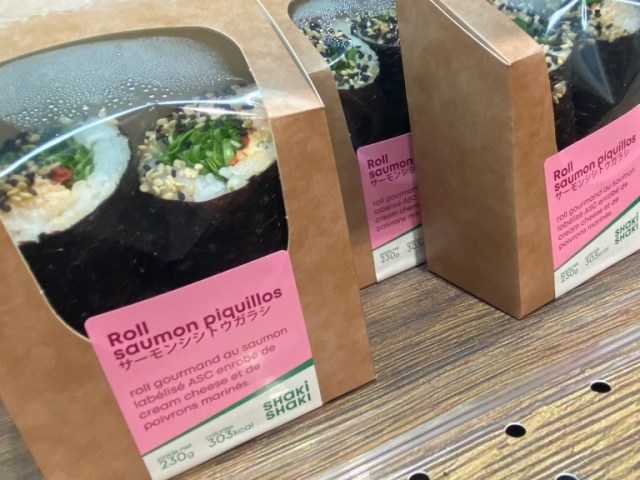

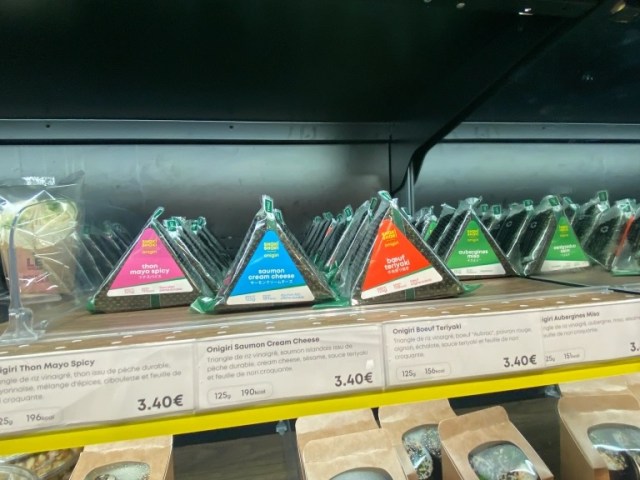
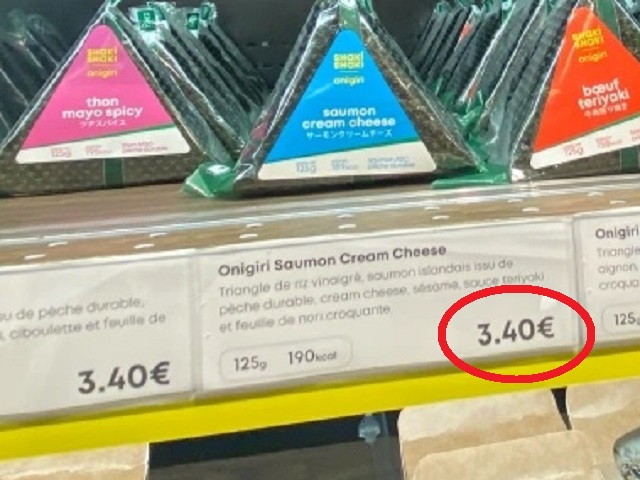
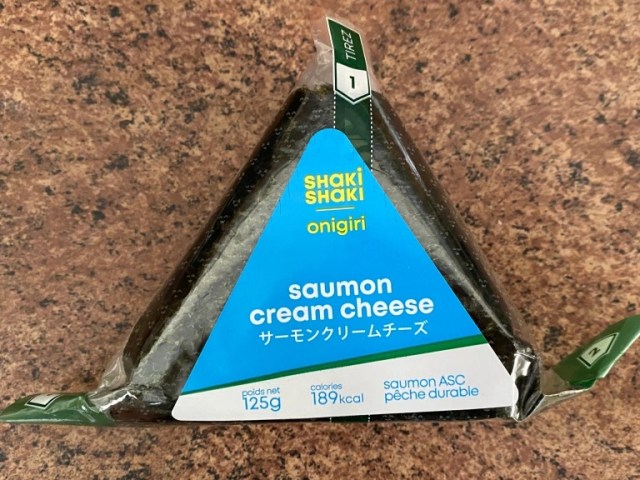
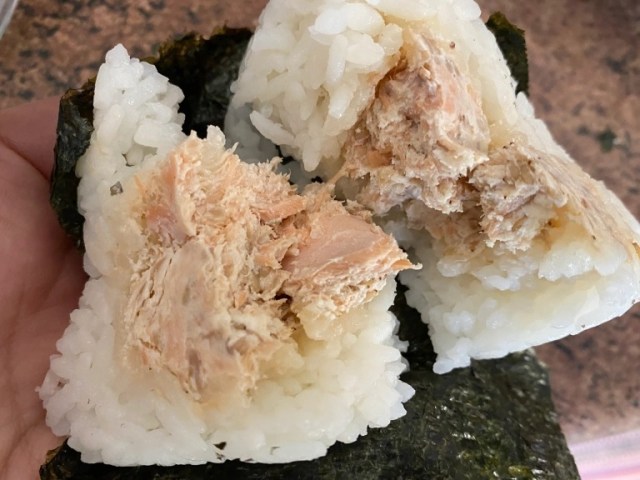
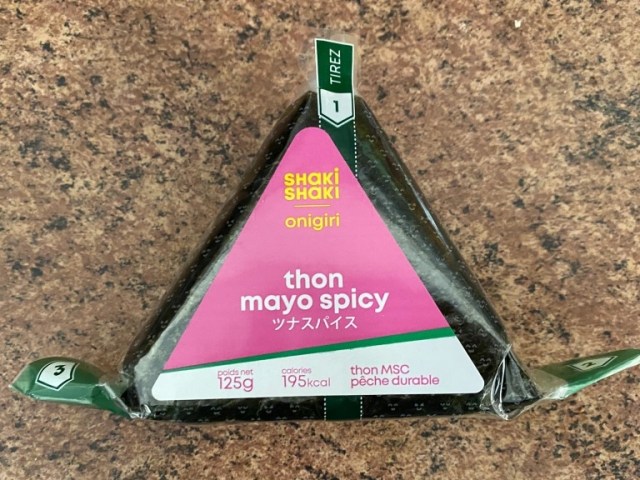
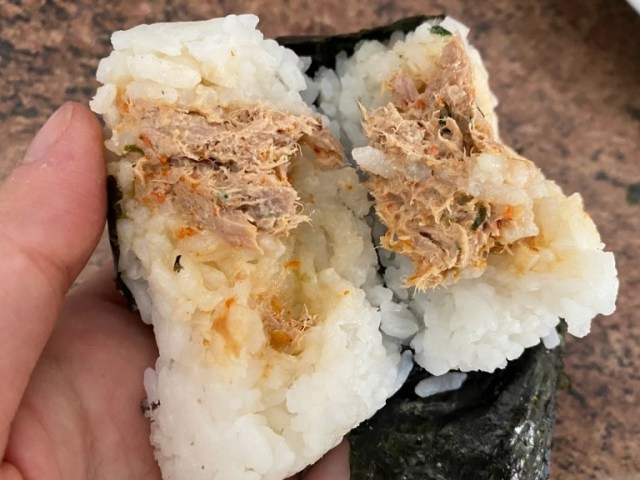
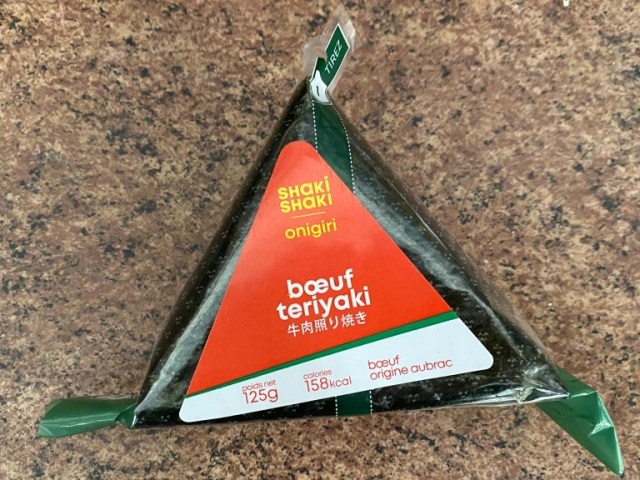

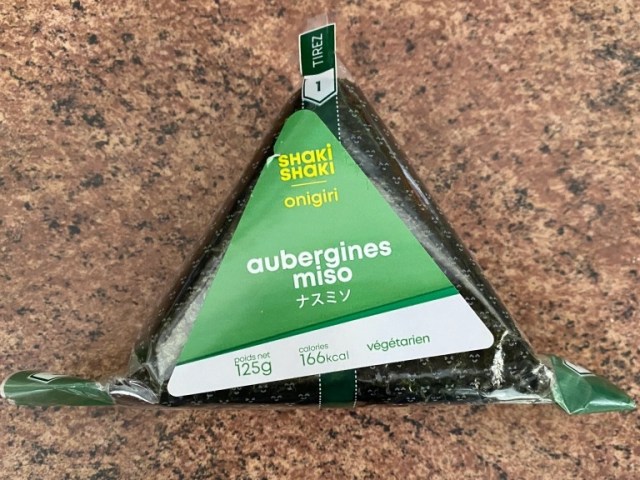
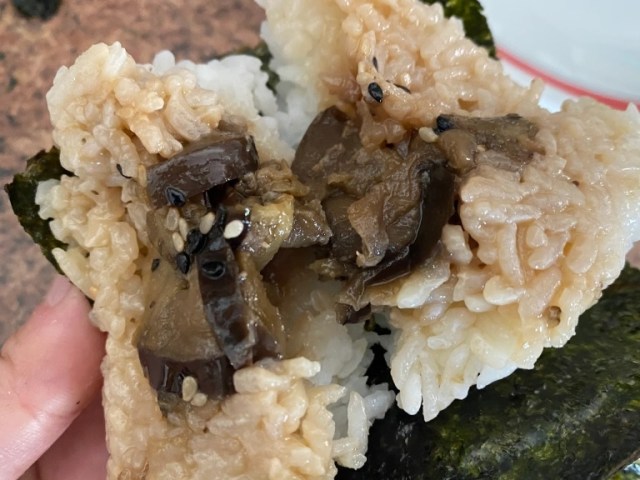
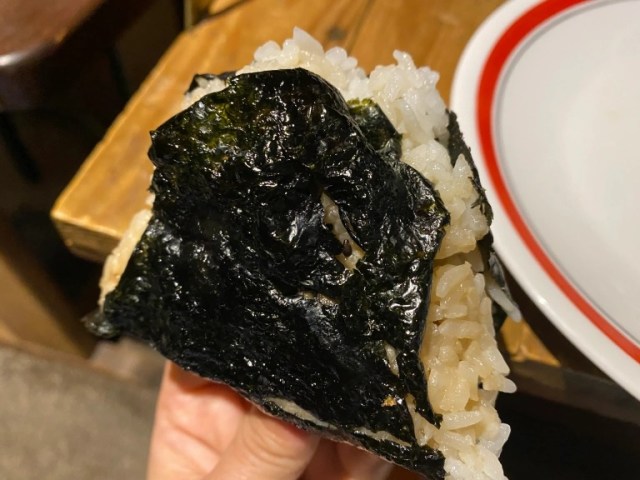

 We visit a restaurant called ‘Otaku’ in France, eat some otaku sushi
We visit a restaurant called ‘Otaku’ in France, eat some otaku sushi “Hey Singaporean taxi driver! Take us to the best restaurant in Singapore!”
“Hey Singaporean taxi driver! Take us to the best restaurant in Singapore!” Have you tried Tokushima ramen? No? You should (says our obsessed Japanese-language reporter)
Have you tried Tokushima ramen? No? You should (says our obsessed Japanese-language reporter) We visit a ramen bar in Croatia, meet a whole new version of ramen we can’t wait to make at home
We visit a ramen bar in Croatia, meet a whole new version of ramen we can’t wait to make at home The best-selling rice ball at Family Mart is…SPAM onigiri?
The best-selling rice ball at Family Mart is…SPAM onigiri? Japan’s summertime towelket pillowcases are even better with the addition of Ghibli stars【Photos】
Japan’s summertime towelket pillowcases are even better with the addition of Ghibli stars【Photos】 Foreigner’s request for help in Tokyo makes us sad for the state of society
Foreigner’s request for help in Tokyo makes us sad for the state of society Mikado Coffee is a 76-year-old coffee chain with a major celebrity connection
Mikado Coffee is a 76-year-old coffee chain with a major celebrity connection Sandwiches fit for a sumo served up in Osaka【Taste Test】
Sandwiches fit for a sumo served up in Osaka【Taste Test】 Should you add tartar sauce to Japanese curry rice? CoCo Ichi makes diners an unusual offer
Should you add tartar sauce to Japanese curry rice? CoCo Ichi makes diners an unusual offer Japan’s massive matcha parfait weighs 6 kilos, contains hidden surprises for anyone who eats it
Japan’s massive matcha parfait weighs 6 kilos, contains hidden surprises for anyone who eats it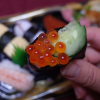 Here’s the reason why your expensive ikura sushi often comes with some cheap cucumber slices
Here’s the reason why your expensive ikura sushi often comes with some cheap cucumber slices Haku is…Chihiro’s dead brother? Studio Ghibli fans blown away by Spirited Away theory
Haku is…Chihiro’s dead brother? Studio Ghibli fans blown away by Spirited Away theory How to find a lost cat: Unique method from Japan proves to be surprisingly effective
How to find a lost cat: Unique method from Japan proves to be surprisingly effective Our Japanese reporter visits Costco in the U.S., finds super American and very Japanese things
Our Japanese reporter visits Costco in the U.S., finds super American and very Japanese things McDonald’s new Happy Meals offer up cute and practical Sanrio lifestyle goods
McDonald’s new Happy Meals offer up cute and practical Sanrio lifestyle goods Japanese ramen restaurants under pressure from new yen banknotes
Japanese ramen restaurants under pressure from new yen banknotes French Fries Bread in Tokyo’s Shibuya becomes a hit on social media
French Fries Bread in Tokyo’s Shibuya becomes a hit on social media Studio Ghibli releases new action figures featuring Nausicaä of the Valley of the Wind characters
Studio Ghibli releases new action figures featuring Nausicaä of the Valley of the Wind characters Red light district sushi restaurant in Tokyo shows us just how wrong we were about it
Red light district sushi restaurant in Tokyo shows us just how wrong we were about it New private rooms on Tokaido Shinkansen change the way we travel from Tokyo to Kyoto
New private rooms on Tokaido Shinkansen change the way we travel from Tokyo to Kyoto Tokyo Tsukiji fish market site to be redeveloped with 50,000-seat stadium, hotel, shopping center
Tokyo Tsukiji fish market site to be redeveloped with 50,000-seat stadium, hotel, shopping center Beautiful Ghibli sealing wax kits let you create accessories and elegant letter decorations【Pics】
Beautiful Ghibli sealing wax kits let you create accessories and elegant letter decorations【Pics】 Japanese city loses residents’ personal data, which was on paper being transported on a windy day
Japanese city loses residents’ personal data, which was on paper being transported on a windy day Studio Ghibli releases Kiki’s Delivery Service chocolate cake pouches in Japan
Studio Ghibli releases Kiki’s Delivery Service chocolate cake pouches in Japan New definition of “Japanese whiskey” goes into effect to prevent fakes from fooling overseas buyers
New definition of “Japanese whiskey” goes into effect to prevent fakes from fooling overseas buyers All-you-can-drink Starbucks and amazing views part of Tokyo’s new 170 meter-high sky lounge
All-you-can-drink Starbucks and amazing views part of Tokyo’s new 170 meter-high sky lounge More foreign tourists than ever before in history visited Japan last month
More foreign tourists than ever before in history visited Japan last month New Pokémon cakes let you eat your way through Pikachu and all the Eevee evolutions
New Pokémon cakes let you eat your way through Pikachu and all the Eevee evolutions Disney princesses get official manga makeovers for Manga Princess Cafe opening in Tokyo
Disney princesses get official manga makeovers for Manga Princess Cafe opening in Tokyo Sales of Japan’s most convenient train ticket/shopping payment cards suspended indefinitely
Sales of Japan’s most convenient train ticket/shopping payment cards suspended indefinitely Sold-out Studio Ghibli desktop humidifiers are back so Totoro can help you through the dry season
Sold-out Studio Ghibli desktop humidifiers are back so Totoro can help you through the dry season Japanese government to make first change to romanization spelling rules since the 1950s
Japanese government to make first change to romanization spelling rules since the 1950s Ghibli founders Toshio Suzuki and Hayao Miyazaki contribute to Japanese whisky Totoro label design
Ghibli founders Toshio Suzuki and Hayao Miyazaki contribute to Japanese whisky Totoro label design Doraemon found buried at sea as scene from 1993 anime becomes real life【Photos】
Doraemon found buried at sea as scene from 1993 anime becomes real life【Photos】 Tokyo’s most famous Starbucks is closed
Tokyo’s most famous Starbucks is closed One Piece characters’ nationalities revealed, but fans have mixed opinions
One Piece characters’ nationalities revealed, but fans have mixed opinions We asked a Uniqlo employee what four things we should buy and their suggestions didn’t disappoint
We asked a Uniqlo employee what four things we should buy and their suggestions didn’t disappoint Princesses, fruits, and blacksmiths: Study reveals the 30 most unusual family names in Japan
Princesses, fruits, and blacksmiths: Study reveals the 30 most unusual family names in Japan We try European Cup Noodle Soba flavors to see which ones come out on top 【Taste test】
We try European Cup Noodle Soba flavors to see which ones come out on top 【Taste test】 The McDonald’s Hokkaido Salmon Burger is a sell-out hit…outside of Japan【Taste test】
The McDonald’s Hokkaido Salmon Burger is a sell-out hit…outside of Japan【Taste test】 Ramen and girls bar: Where you can talk to women who aren’t dressed like hosts or maids
Ramen and girls bar: Where you can talk to women who aren’t dressed like hosts or maids Japan’s big eats just got even bigger at this little-known cafe
Japan’s big eats just got even bigger at this little-known cafe Survey ranks convenience store rice balls – salmon, sea-dwelling poultry & plants steal the show
Survey ranks convenience store rice balls – salmon, sea-dwelling poultry & plants steal the show We try a rotating sushi restaurant in New Delhi, are surprised to find no rotating sushi
We try a rotating sushi restaurant in New Delhi, are surprised to find no rotating sushi Our Japanese language reporter gets lucky with Vietnam McDonald’s Prosperity Beef Burger
Our Japanese language reporter gets lucky with Vietnam McDonald’s Prosperity Beef Burger Taste-testing Japan’s beef tongue/gacha beef vending machine in Sendai【Taste test】
Taste-testing Japan’s beef tongue/gacha beef vending machine in Sendai【Taste test】 How can you maximize the calories you burn singing karaoke?【Experiment】
How can you maximize the calories you burn singing karaoke?【Experiment】 Haneda Airport’s new rice ball stand — Sister shop Tokyo’s best out-of-the-way onigiri spot
Haneda Airport’s new rice ball stand — Sister shop Tokyo’s best out-of-the-way onigiri spot Hey, Thai tuk-tuk driver! Take us to the best Thai restaurant in this part of Bangkok!
Hey, Thai tuk-tuk driver! Take us to the best Thai restaurant in this part of Bangkok! Hey, Croatian taxi driver! Take us to the restaurant with the best štrukli in Zagreb
Hey, Croatian taxi driver! Take us to the restaurant with the best štrukli in Zagreb Japanese confectionery store Toraya serves up a surprising meal in Paris
Japanese confectionery store Toraya serves up a surprising meal in Paris We get our hands on a coveted Yodobashi lucky bag, this time the beauty and health gadget box
We get our hands on a coveted Yodobashi lucky bag, this time the beauty and health gadget box Our reporter orders food from Uber Eats, falls in love, learns that fate works in mysterious ways
Our reporter orders food from Uber Eats, falls in love, learns that fate works in mysterious ways Pikachu pyjamas make this secret Pokémon fukubukuro lucky bag worth searching for
Pikachu pyjamas make this secret Pokémon fukubukuro lucky bag worth searching for
Leave a Reply